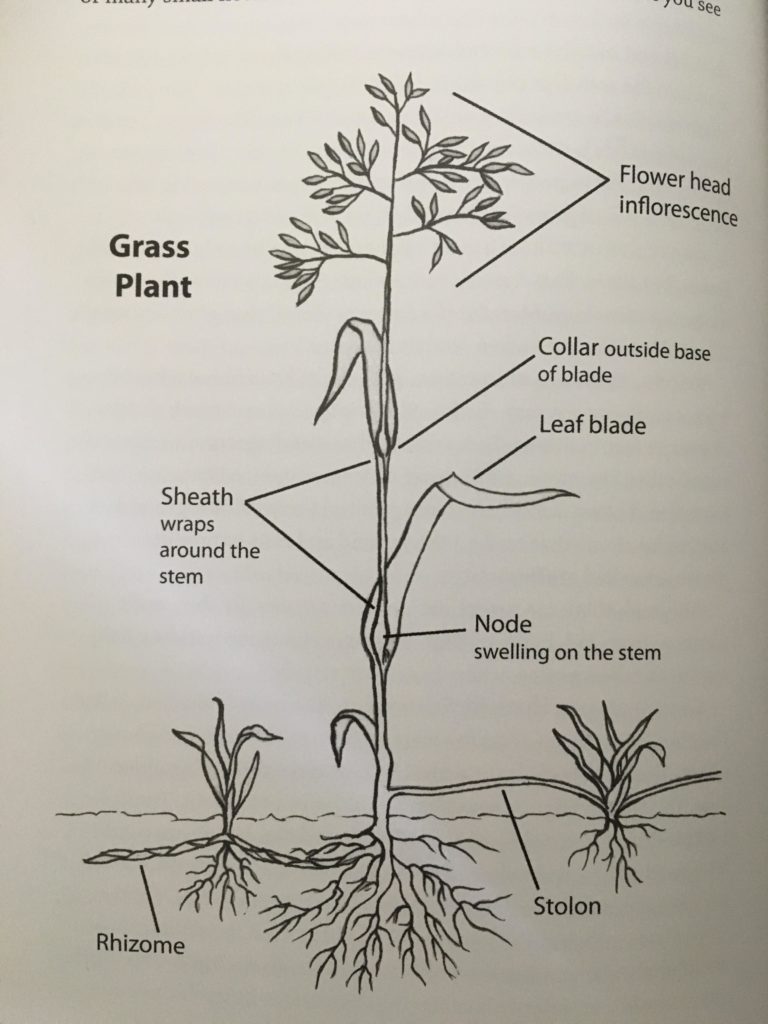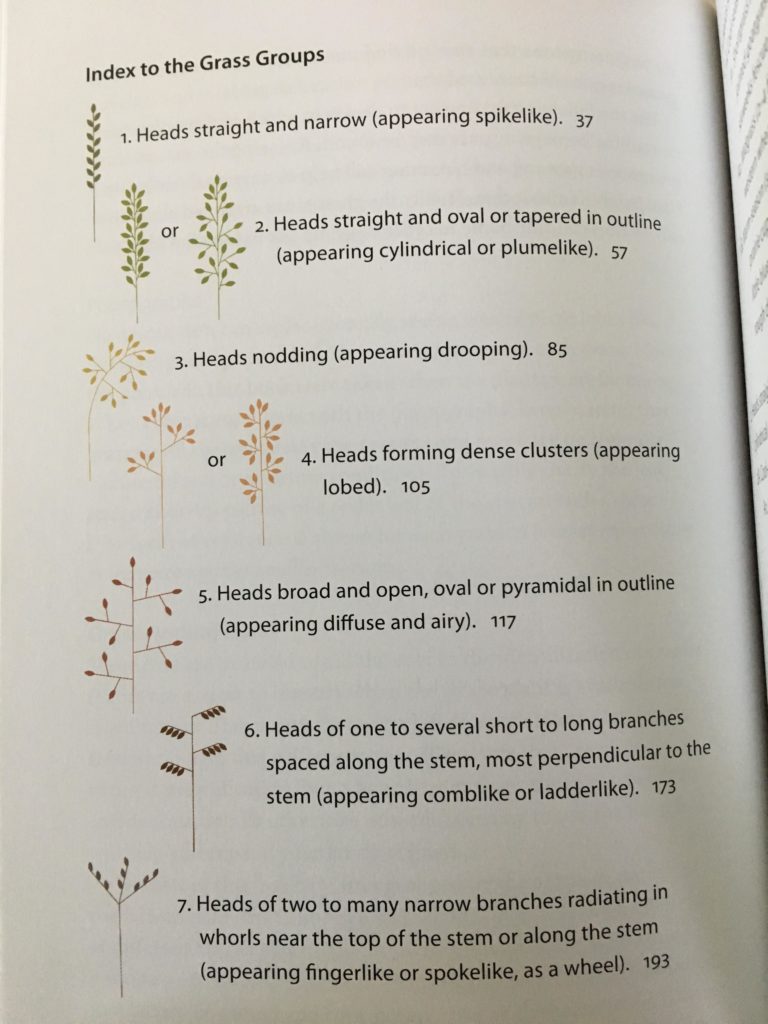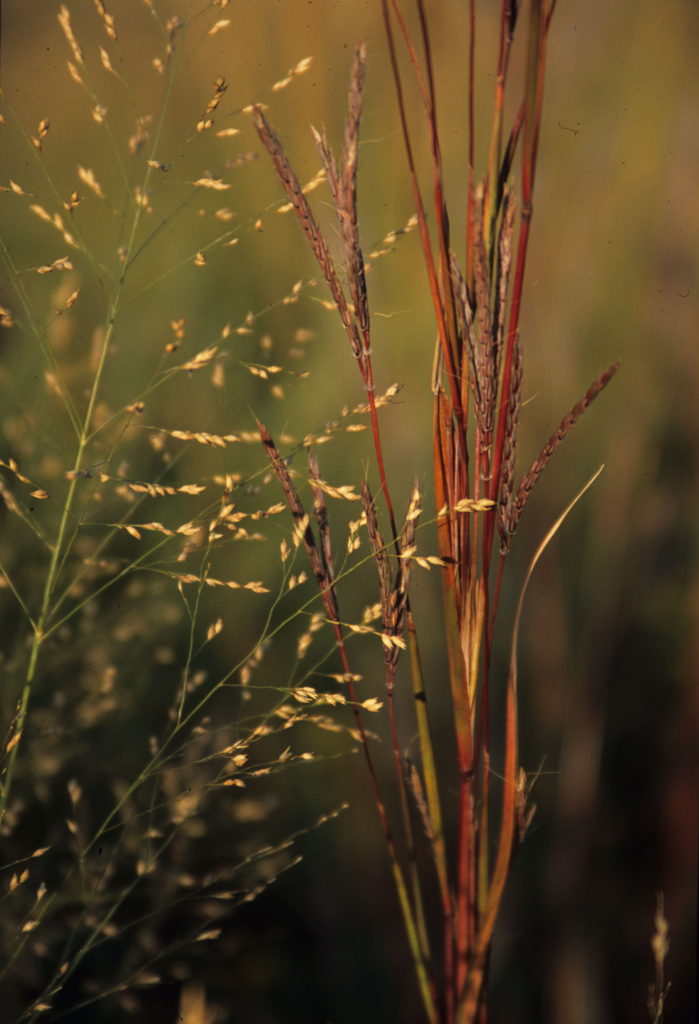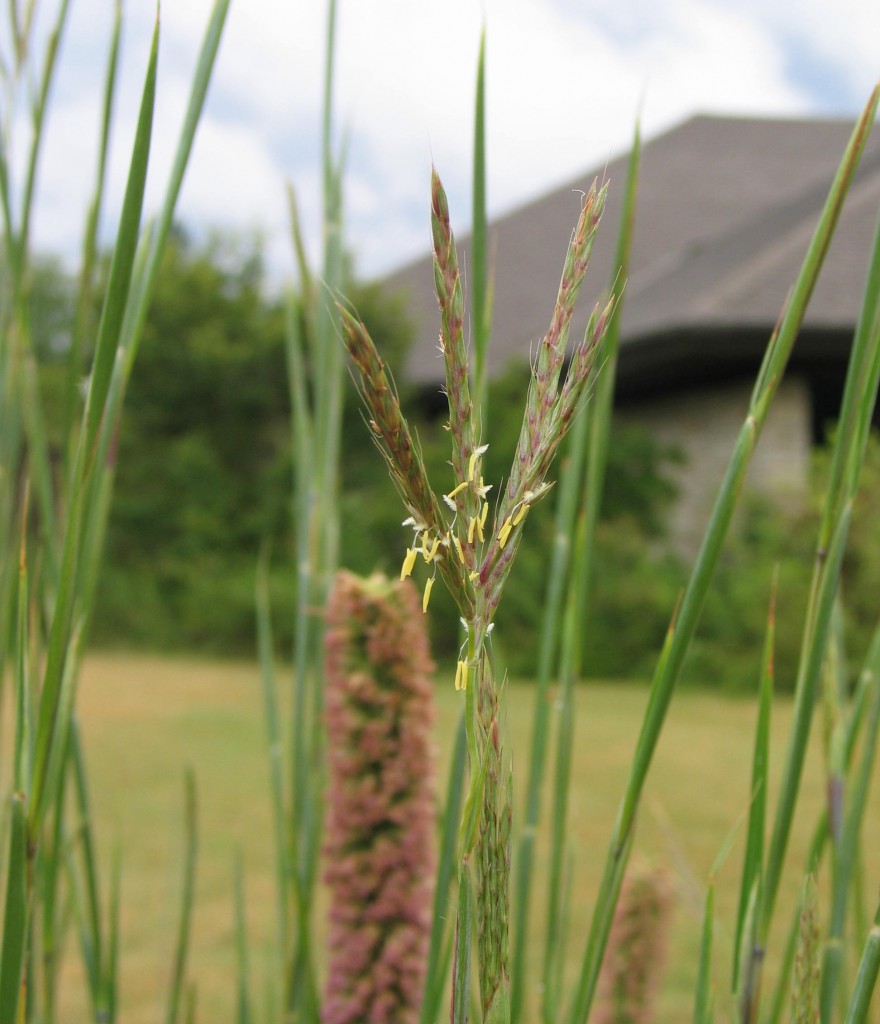Grasses are tenacious harnessers of the prairie.
This humble family survives the open plains and thrives in niches that others are too flamboyant to endure. Their incredibly deep roots protect them from drought, and their tall silica-rich stalks scatter the next generation.
Though often thought of as a backdrop for peaking wildflowers, grasses are actually flowering plants themselves. They evolved to stand and spread under vast, harsh skies. While their fraternal twin the orchid family grew alluring petals and fragrances, the grasses grew into tall and limber pollen casters. Well after the first flowering plants and more recently than the dinosaurs, grasses diverged from other buds as minimalists.
They found resilience in simplicity.

Without a need to attract insects to jumble their genes, grasses didn’t have to spend masses of energy on lavish pageantry. They dug their roots in deeper, grew a few more stickers, and when grazers or burns mowed them down, they came back sprawling.
Minimal beauty
Their flowers stayed small and muted. They lost their petals and rearranged their bracing bracts into something more hardy. When pastures bloom, their shy brilliance pokes out of camouflaged grains. They exist as rows of envelopes, smaller florets, braiding themselves into a diversity of branching inflorescence.
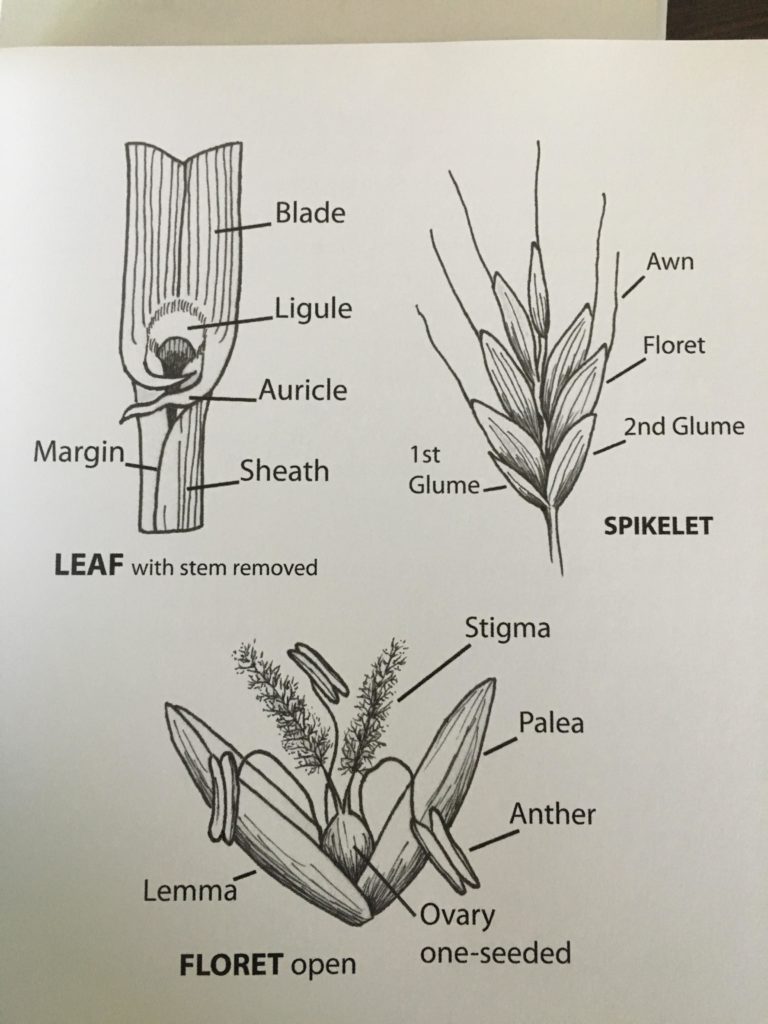
Grass flowers adorn themselves with what looks like a string of pollen-covered lanterns. From within, a curious set of small internal leaves will swell, pushing feathery stigmas and powdery anthers out of the floret.
Grasses are anemophilous, “wind loving.” Although their blooms are only half as vivid as their stalks, many make small colorful gifts to the breeze. The female pistil can come in silver, yellow or deep periwinkle, whereas the male anthers can flaunt yellow, orange, green, crimson and even lavender-purple.
You can see them displaying their small wares right now along the grounds of the Arboretum: blue grama, big bluestem and brome all in their summer suede.
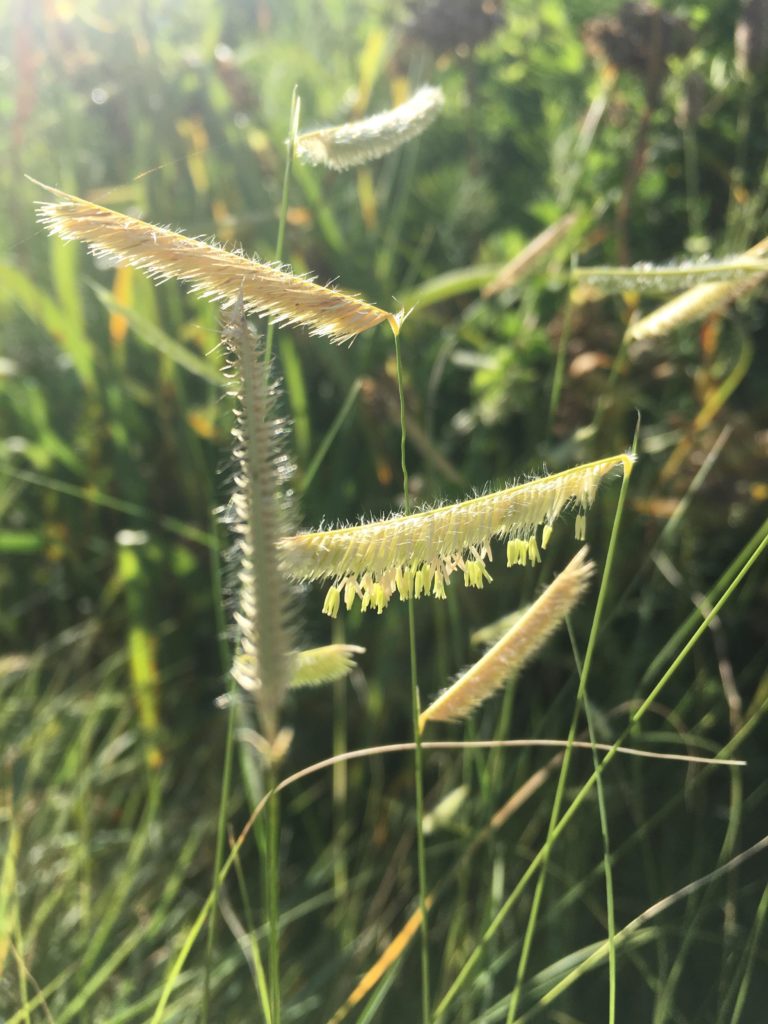
Blue grama, Bouteloua gracilis 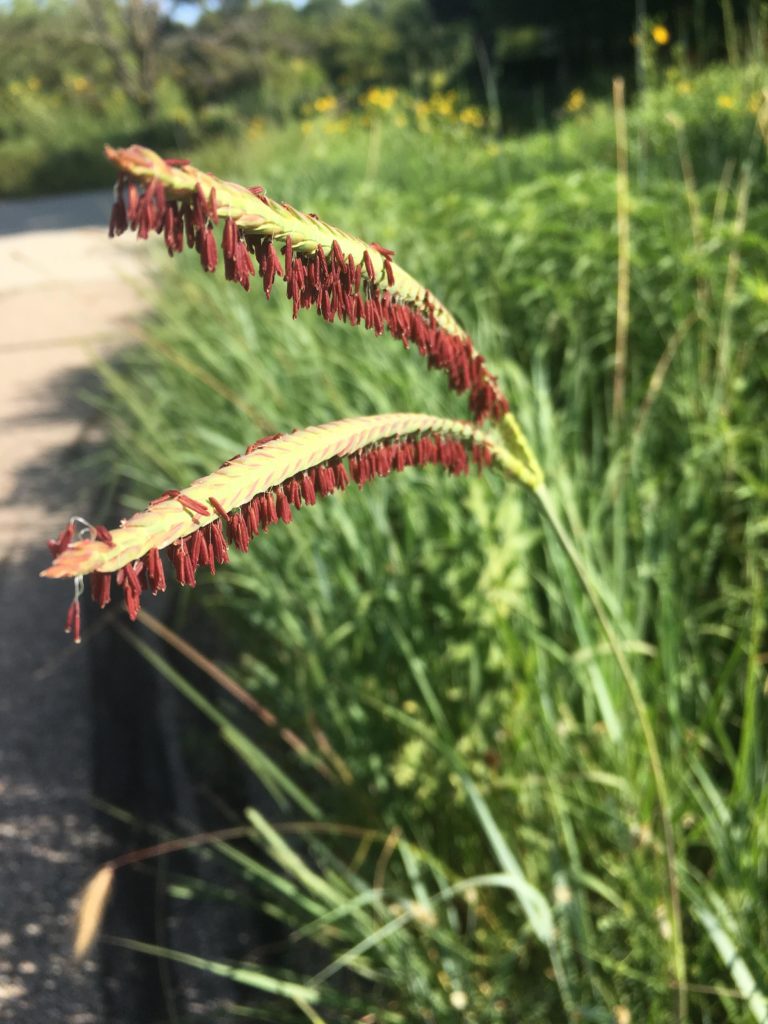
Big bluestem, Andropogon gerardii
Beginners to winners
Another reductionist adaptation is their use of spiny awls. You probably know them better as stickers. These extra bristles get caught in fur and socks to be pulled across the prairie. Some awls are bent, some are straight and some will even twist and untwist with fluctuations in humidity, screwing themselves into the earth.
They may have replaced fragrance for practicality, but ultimately it’s had major payoffs. Swaths of pasture persist through drought, fire and storm. Twenty percent of all wild plants in the Great Plains are grasses. Not only do their populations outnumber any other group of flowering plant, their distribution is sweeping. By weight they account for 70 percent of all crops.
Truly subdued prominence.
Resources: Barnard, Iralee. Field Guide to the Common Grasses of Oklahoma, Kansas, and Nebraska. University Press of Kansas, 2014

